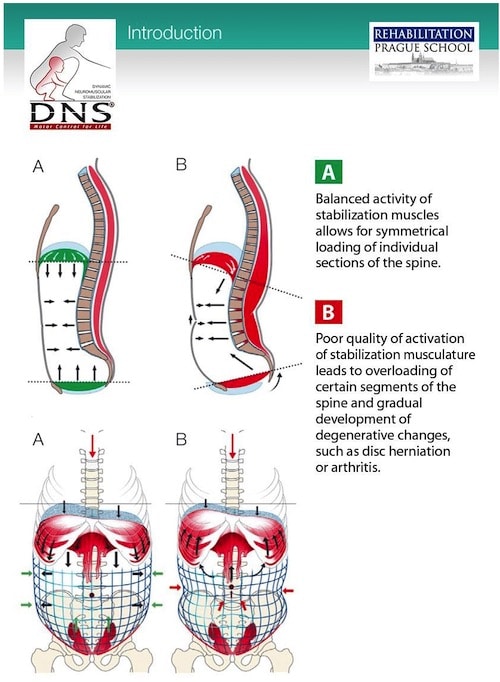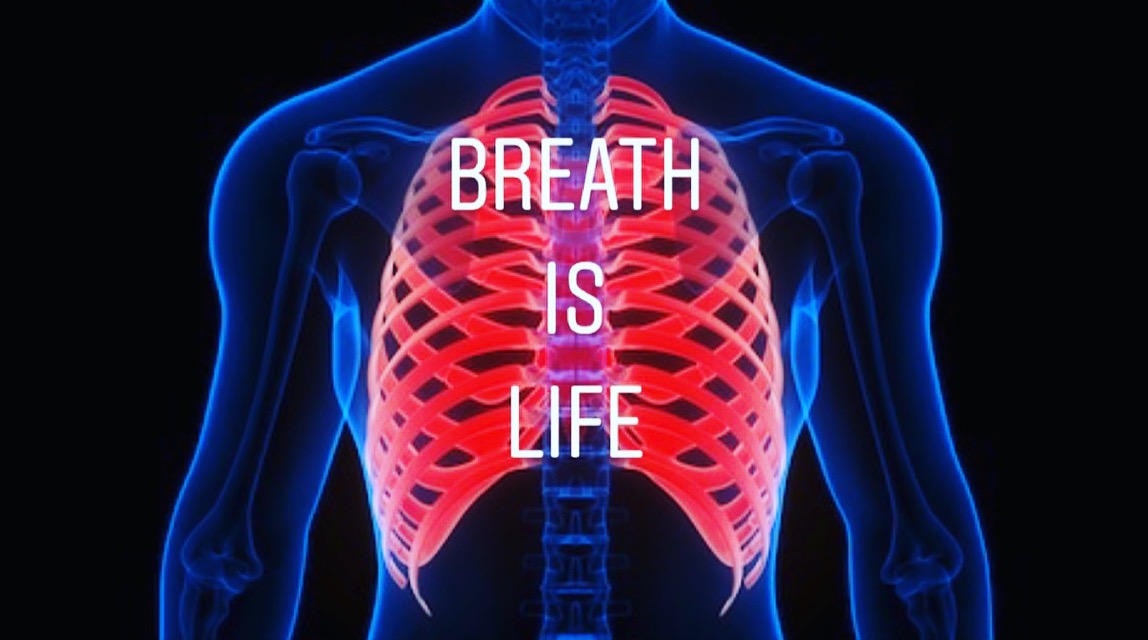The first MOVEMENT IS MEDICINE article stated:
“You probably don’t know how to breathe and move well.
It isn’t your fault.
We escaped the food chain.
We aren’t hunter-gatherers anymore.”
We don’t have to hunt beasts, forage for food and migrate on long treacherous trips anymore.
This great escape led to our modern era filled with creativity, ingenuity and invention.
It’s truly an inspirational time in human history to be alive!
But, if we aren’t careful this blessing can also bring many unwanted burdens, because we don’t move and eat as our biology is hardwired to.
For this reason we have to (or get to) compensate by including intentional activity and healthy nutritional practices if we want to escape our modern lifestyle created diseases.
Breathing is a great practice to start to restore our balance back to health.
The numerous benefits breathing offers are astounding.
Learning to breathe better will help you to move and feel better, get fitter and be happier!
De-stressing, getting out of pain, and being more mindful can have an amazing impact like that!
Let’s dive into the often neglected powerful muscle that helps control our breathing:
The diaphragm.
THE DIAPHRAGM HAS 3 MAJOR FUNCTIONS:
- Breathing/respiration
- Bracing/stabilization/intra-abdominal pressure (IAP) and
- Closing the lower esophageal sphincter.

Our disconnect from this muscle is causing innumerable issues:
- Americans are stressed out
- Many suffer from back pain and
- GERD medicine is the biggest selling prescription drug in the U.S.
All three of these issues correlate with the functions of the diaphragm.
Failing to properly use the diaphragm can wreak havoc on our bodies.
Imagine if people knew how to use it!
Learning to breathe and brace better helps:
- Lower stress and manage it better
- Lower blood pressure (statins are the number one prescribed medication in the world)
- Better regulate the sympathetic and parasympathetic states
- Protect against back and spine pain
- Increase performance and reduce the risk of injury
- Lessen and prevent acid reflux issues (for best results pair with Good Nutrition)
- Improve digestive, renal, adrenal, liver, uterine, ovarian, pelvic floor, bowel & bladder function and more according to 2019 Nobel Prize winners! [i]
Unfortunately, we have lost touch with our breathing and bracing capabilities. Therefore, stress, back pain and many modern-day ailments abound.
We desperately need a movement re-education.
We need to restore the foundational movement patterns we were born with but lost over time.

The diaphragm is the first piece of the puzzle.
To quote Karel Lewit who helped pave the way for Dynamic Neuromuscular Stabilization (or DNS to those of us in the know):
“If breathing isn’t normalized – no other movement patterns can be.”
The diaphragm is a unique mammalian organ made up of skeletal muscle tissue. This is an important distinction as this organ is controlled involuntarily but can also be used voluntarily.
Breathing and bracing competency depend on posture and positioning.
Here’s the method we use to assess and create proper breathing mechanics:
- Getting the rib cage and pelvis in neutral positioning a.k.a. “closed scissors”
- Learning to breathe with 360° diaphragm expansion looking at filling certain areas evenly
- Creating intra-abdominal pressure (IAP) without the use of breath
- Strengthening the mind-muscle connection with the diaphragm through positions and exercises
Want to improve your breathing mechanics and diaphragm function to protect against injury and increase your performance in the gym and on the field?
Get your reps in
What’s your favorite muscle group to train? How many total reps did you do for it this week? Add them up, I’ll wait.
If that number is above 500, you’re probably doing a specialization program!
If it’s under 50 maybe you don’t really care about that muscle group. #LegDay 💤 😴
What about your average daily step count? Also known as non-exercise activity thermogenesis. Or N.E.A.T. as the cool kids like to call it. 5,000 steps? 10,000?
If it’s under 5,000 that is officially considered a sedentary lifestyle [ii] and your activity level could use some work!
Now consider the following:
according to the Postural Restoration Institute the average person takes 20,000-25,000 breaths a day.
Don’t you want to make those “reps” count? How many are intentional?
Do you set aside specific time for breath work?
It’s probably the best time to start taking your health seriously and get those reps in!

GOT IAP?



Click to enlarge.
Your diaphragm is like a piston in a cylinder.
To properly power the piston, you need correct positioning. Getting the cylinder right provides a position of power for the piston. Your posture will determine your ability to pressurize.
Prolonged suboptimal positions and poor patterns will likely lead to pain.
Purposeful breathing and pace can help regulate the parasympathetic state, calm the storm and bring peace.
And the “P’s” don’t stop there:
The two parallel pathways of neurons that power breathing are the: pre-Bötzinger complex [iii] and the parafacial nucleus. [iv]
Here are a few exercises I use to help assist with proper positioning for breathing and pressurization that also help to get out of pain.

90-90 Hip Shift with Hemibridge and Balloon
This foundational Postural Restoration Institute exercise is a classic.
This uncommon looking movement fixes many common issues and helps to:
- Relieve chronic low back pain [v] [vi]
- Realign pelvis and rib positioning
- Retrain breathing patterns
- Re-engage intra-abdominal pressure and
- Regain a zone of apposition. (ZOA)
This exercise primarily works the hamstrings, internal obliques, and transversus abdominis: getting and holding the ribs down during a full exhale allows the core to be retrained properly.
GET YOUR FLEX ON BY GETTING OUT OF EXTENSION.
Here are some cues to fix common errors:
- Keep your foot flat on wall while sensing your left heel to engage the hamstring.
- Don’t push into the wall, instead drag your heels down.
- Keep the lower back flat on the floor.
- Fully exhale and then pause for a 4 count.
- Don’t pinch the balloon in between breaths!
I know it looks weird!
As unusual as this exercise may look there’s a lot going on under the surface that offers many benefits, just trust me.




Getting a balloon in your mouth can really help with low-back pain (LBP). [vii] [viii]
You need stability and strength from the diaphragm. [ix] [x]
And if this type of exercise was good for Mr. Universe, Mr. Olympia and some guy named Arnold it’ll be good for you too!

Staggered-Stance Deep Squat Breathing
First, we dial in diaphragmatic breathing and proper positioning of the pelvis and thorax to create better IAP. Then we then move onto the next puzzle piece: the rib cage.
Odds are if you love lifting heavy things like me you’ve probably given up the ability to breathe into your upper back.
And if you’re a regular human it’s likely been decades since you’ve done a full inhale and exhale or purposefully sent your air anywhere.
Regardless, focusing on upper back expansion has many implications ranging from getting out of SI joint pain to relieving shoulder issues and more.
It also helps with recovery and transitioning to the parasympathetic state which is always a plus!
Critical Cues:
- Stretch the lat while leaning back
- Place your weight on the right heel
- Put your left arm behind your back
- Breathe in deeply through your nose
- Maximally expand your upper back
- Round your spine forward
- Keep your shoulders down
- Fully exhale your ribs down.
Focus on expanding the right side of your rib cage and feeling a good stretch.
Do this drill on the right side only.
Posterior mediastinum expansion unlocked!
This positional breathing drill goes well in a warmup as well as in between sets to ensure a more eustress model of training vs. the distress mode most live and die for. GET THOSE REPS IN!
Here’s another bonus: pay attention to your breathing during training- if you can do your workout with nose only breathing your heart rate will stay under 150bpm and you’ll being in avoid the sympathetic. Paying attention to your mouth to nose breathing and heartbeat will answer that age old question: how long should I rest in between sets?
Learn to listen to your own internal machinery before you rely on external technology.
And to all my FRC fam out there- I like to think of these as CARs for the ribs.

3-Month-Old Supine Position
This last exercise comes from the world of Dynamic Neuromuscular Stabilization.
DNS is a fascinating analysis and breakdown of human movement starting at birth. It studies the milestones we all achieved at predictable times during the maturation process from infantile baby to about the two-year mark.
Focus on breathing and 360° expansion here then onto bracing. Lifting your legs slightly off the surface or completely off will increase the demands of IAP. This makes a great strength exercise. Hold this isometric for time and complete a few sets. Go for quality over quantity. This also goes well in a warm-up circuit.
This was a very familiar position when we were three months old.
Don’t be deceived though, it won’t be as easy as babies make it look!
The Core360Belt is a great tool I use with clients to properly integrate 360° breathing and bracing. I recommend using it to train the diaphragm as it offers sensory feedback to help dial in that mind-muscle connection. Use code “SAVE10” for a 10% discount.
Visit our Reflexive Performance Reset article to learn even more about de-stress, breathing and the power of the diaphragm.
BREATHE WITH ME
These days there’s a lot of talk about health.
Scientists are searching for the next best medicine. Meanwhile we’ve all but forgotten and left behind a medicine as old as time itself: MOVEMENT.
The heart and the diaphragm are continuously moving to keep us alive. It may be a good idea to train them if health and longevity matter to you.
If you want to take your body back and get control of your health we are here to help!
Taking the time to invest in your body and health isn’t something you’ll regret. After all, you only get one body, make the most of it!
To schedule a consultation and learn more about breathing, bracing, and mobility CONNECT WITH US HERE.
We even offer nutrition and exercise coaching, so we’ve got you covered no matter what your goals are!
Nutritional Mastery Coaching can help you:
Learn to eat better, without dieting or feeling deprived.
Get active and moving no matter what shape you’re in.
And produce lifelong change inside and out for a brighter healthier future.
We’d love to learn more about you and your story.
Schedule your complementary consultation and learn more about our coaching services.
We also offer virtual online sessions to assess and coach you through these exercises and much more.
Email️ info@NutritionalMastery.com or CONNECT WITH US HERE.

[i] Press release: The Nobel Prize in Physiology or Medicine 2019. NobelPrize.org. Nobel Media AB 2020. Thu. 30 Jul 2020. <https://www.nobelprize.org/pri…/medicine/2019/press-release/>
[ii] Tudor-Locke, Catrine, et al. “A step-defined sedentary lifestyle index:< 5000 steps/day.” Applied physiology, nutrition, and metabolism 38.2 (2013): 100-114. APA
[iii] Smith JC, Ellenberger HH, Ballanyi K, Richter DW, Feldman JL (November 1991). “Pre-Bötzinger complex: a brainstem region that may generate respiratory rhythm in mammals”. Science. 254 (5032): 726–9. doi:10.1126/science.1683005. PMC 3209964. PMID 1683005.
[iv] Alheid, George F., and Donald R. McCrimmon. “The chemical neuroanatomy of breathing.” Respiratory physiology & neurobiology 164.1-2 (2008): 3-11.
[v] Fernandes, Jorida, and Akshay Chougule. “Effects of Hemibridge with Ball and Balloon Exercise on Forced Expiratory Volume and Pain in Patients with Chronic Low Back Pain: An Experimental Study.” International Journal of Medical Research & Health Sciences 6.8 (2017): 47-52.
[vi] Badiuk, Boyd WN, Jordan T. Andersen, and Stuart M. McGill. “Exercises to Activate the Deeper Abdominal Wall Muscles: The Lewit A Preliminary Study.” The Journal of Strength & Conditioning Research 28.3 (2014): 856-860.
[vii] Boyle, Kyndall L., Josh Olinick, and Cynthia Lewis. “The value of blowing up a balloon.” North American journal of sports physical therapy: NAJSPT 5.3 (2010): 179.
[viii] Hudson, Dayne. “HOW A BALLOON CAN HELP ALLEVIATE LOWER BACK PAIN.”
[ix] Nelson, Nicole. “Diaphragmatic breathing: the foundation of core stability.” Strength & Conditioning Journal 34.5 (2012): 34-40.
[x] Janssens, Lotte, et al. “Greater diaphragm fatigability in individuals with recurrent low back pain.” Respiratory physiology & neurobiology 188.2 (2013): 119-123.


is there a video of that balloon exercise (laying on the floor with the legs on the wall ) ?
LikeLike
Hi Halyna, thank you for reaching out! Please email me at info@NutritionalMastery.com or use on the connect page and I will send you some resources. I also do virtual sessions if you’d like to learn more about the theory and application of PRI. The video will help but knowing why we do what we do and having more options would be best for really piecing together everything behind this exercise and more. 🙂
LikeLike